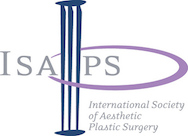
One of the highlights of the aesthetic industry calendar, the CCR Expo, is fast approaching. It takes place this year on 8th-9th October at London Olympia – and we’re delighted to say we’re exhibiting.
Whatever stage you’re at in your aesthetic career, the CCR Expo (Clinical Cosmetic and Reconstructive Expo) is sure to have something of interest for you.
If you’ve been before, you’ll know it’s one of the most respected events of its kind in the industry, comprising two days of surgical and non-surgical conferences, workshops, Continuing Professional Development content and live demonstrations – with the vast majority being free to attend as well as CPD accredited.
If you’ve never been to the CCR Expo, or are new to the industry, we’d really recommend a visit. You’ll access valuable information and resources that will enhance your knowledge, sharpen your skills and help develop your career.
What can you expect at the CCR Expo?
This year, for the first time, the CCR Expo programme includes a useful new educational stream specifically for those who are planning on making the move into aesthetics.
“Getting Started in Aesthetics” runs on both the Thursday and Friday, and aims to guide you through the whole process of making the transition to facial aesthetics.
The masterclass will cover both how and why to make the move into aesthetics, as well as filling you in on the specific regulations and legal complications you need to be aware of.
But there’s plenty that will be of interest if you’re already established in the industry too.
A varied programme of free lectures, seminars, meetings and demos includes a Surgical & Non-Surgical Workshop, Non-Surgical Conference and an Allergan Injectables Masterclass.
Additional paid-for events include the BAAPS Annual Scientific Meeting and the Journal of Aesthetic Nursing Conference, as well as the application-only British Cosmetic Dermatology Group Expert Session.
Meet Cosmetic Courses at the CCR Expo
If you do decide to come along, be sure to swing by our stand and say hello. You’ll find us in the BAAPS area on Stand G50.

Our Medical Director Mr Adrian Richards and our trainer, qualified dentist Dr Olha Vorodukhina (pictured), will both be there, and will be happy to help if you’d like any advice on training courses, treatment techniques or the practicalities of getting started in aesthetics and setting up your business.
Adrian will also be talking about his ‘Aurora Lift’ on both days. You can catch him on Thursday 8th at 12.40pm and again on Friday 9th at 2.30pm.
The Aurora Lift is the Botulinum toxin and filler technique we use in our advanced facial rejuvenation training at Cosmetic Courses, as well as with patients at our sister company Aurora Skin Clinics.
It’s based on the concept of an A-frame, and involves treating the ageing face by injecting Botox and facial fillers at strategic points on an imaginary ‘A’.
Treating several areas along this ‘A’ – the Glabella, Cheeks, Nasolabial Folds, Marionette Lines and Pre Jowl Salcus – allows us to more effectively counter the downward migration of facial volume to restore the youthful ‘inverted triangle’. (Find out more about the Aurora Lift.)
If you know the basic Botox and filler techniques but are interested in learning more advanced applications, Adrian’s talk will be well worth a visit. So we hope to see lots of you there!
If you’d like to come along to the CCR Expo, registration is still open and you can book. For more information on the Aurora Lift or Cosmetic Courses’ programme of aesthetic training courses, please feel free to contact the team on 01844 318745 or email [email protected].

 Global plastic surgery body ISAPS (International Society of Aesthetic Plastic Surgery) have released some interesting stats on the number of cosmetic procedures performed in 2014.
Global plastic surgery body ISAPS (International Society of Aesthetic Plastic Surgery) have released some interesting stats on the number of cosmetic procedures performed in 2014.
 The aesthetic industry doesn’t stand still for long. With increasing regularity, new treatments come along and grab the public imagination.
The aesthetic industry doesn’t stand still for long. With increasing regularity, new treatments come along and grab the public imagination. 






